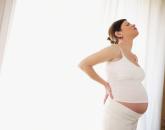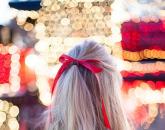Not a moment of peace! Which sunscreen to choose
▪ Minimum temperature
▪ Temperature forecast map
▪ Precipitation forecast map
▪ OT500/1000 card
▪ Wind speed forecast map
▪ Cloud forecast map
▪ Sea temperature
Forecast forecast
Partner sites
Bad weather
: Grodno
Video forecast
Meteonews
11.10. Weather forecast for Belarus for October 12 - 14
On October 12, the weather conditions of Belarus will be determined by the warm air mass coming from the southwest of Europe; the northern half of the republic will be affected by the influence of frontal sections. Cloudy expected →
11.10. Unstable weather has been observed over the past 24 hours
Over the past 24 hours, the weather has been unstable. Rain of varying intensity occurred over most of the territory. During the day, the wind increased in places in the south of the country with gusts of up to 12-16 m/s. Maximum temperature →
11.10. Weather forecast for Belarus for the day of October 11.
Partly cloudy. Light intermittent rain in some areas. The wind is western, southwestern moderate. Maximum air temperature +9..+15°C. In Minsk: →
10.10. Weather forecast for Belarus for October 11 - 13
On October 11, weather conditions in Belarus will be determined by a moist, warm air mass coming from Western Europe. The weather is expected to be cloudy and clear. At night over a large part of the territory →
10.10. The water temperature in rivers and reservoirs is 4.4-12°C
As of October 10, as a result of precipitation, an increase in water levels is observed on most rivers with a daily intensity of mainly 1-9 cm.
Unfavorable conditions for river work →
10.10. Cloudy weather prevailed over the past 24 hours
Over the past 24 hours, cloudy weather prevailed. There were rains of varying intensity everywhere. The maximum air temperature yesterday afternoon ranged from +8°C in the east to +14°C in the west of the republic →
10.10. Severe Weather Warning
On October 12 (Saturday) at night in the north-west, during the day in most parts of the republic the wind is expected to increase with gusts of up to 15-20 m/s.
10.10. Attention!
On the day of October 10 (Thursday) in the southern regions of the republic, the wind is expected to increase in places with gusts of 15-18 m/s.
The sun is the source of life on the planet. Its rays provide the necessary light and warmth. At the same time, ultraviolet radiation from the Sun is destructive to all living things. To find a compromise between the beneficial and harmful properties of the Sun, meteorologists calculate the ultraviolet radiation index, which characterizes the degree of its danger.
What kind of UV radiation from the sun is there?
Ultraviolet radiation from the Sun has a wide range and is divided into three regions, two of which reach the Earth.
-
UVA. Long-wave radiation range
315–400 nmThe rays pass almost freely through all atmospheric “barriers” and reach the Earth.
-
UV-B. Medium wave range radiation
280–315 nmThe rays are 90% absorbed by the ozone layer, carbon dioxide and water vapor.
-
UV-C. Shortwave range radiation
100–280 nmThe most dangerous area. They are completely absorbed by stratospheric ozone without reaching the Earth.
The more ozone, clouds and aerosols in the atmosphere, the less the harmful effects of the Sun. However, these life-saving factors have a high natural variability. The annual maximum of stratospheric ozone occurs in spring, and the minimum in autumn. Cloudiness is one of the most variable characteristics of weather. The carbon dioxide content also changes all the time.
At what UV index values is there a danger?
The UV index provides an estimate of the amount of UV radiation from the Sun at the Earth's surface. UV index values range from a safe 0 to an extreme 11+.
- 0–2 Low
- 3–5 Moderate
- 6–7 High
- 8–10 Very high
- 11+ Extreme
In mid-latitudes, the UV index approaches unsafe values (6–7) only at the maximum height of the Sun above the horizon (occurs in late June - early July). At the equator, the UV index reaches 9...11+ points throughout the year.
What are the benefits of the sun?
In small doses, UV radiation from the Sun is simply necessary. The sun's rays synthesize melanin, serotonin, and vitamin D, which are necessary for our health, and prevent rickets.
Melanin creates a kind of protective barrier for skin cells from the harmful effects of the Sun. Because of it, our skin darkens and becomes more elastic.
The hormone of happiness serotonin affects our well-being: it improves mood and increases overall vitality.
Vitamin D strengthens the immune system, stabilizes blood pressure and performs anti-rickets functions.
Why is the sun dangerous?
When sunbathing, it is important to understand that the line between the beneficial and harmful Sun is very thin. Excessive tanning always borders on a burn. Ultraviolet radiation damages DNA in skin cells.
The body's defense system cannot cope with such aggressive influence. It lowers immunity, damages the retina, causes skin aging and can lead to cancer.
Ultraviolet light destroys the DNA chain
How the Sun affects people
Sensitivity to UV radiation depends on skin type. People of the European race are the most sensitive to the Sun - for them, protection is required already at index 3, and 6 is considered dangerous.
At the same time, for Indonesians and African Americans this threshold is 6 and 8, respectively.
Who is most influenced by the Sun?
People with fair hair
skin tone
People with many moles
Residents of mid-latitudes during a holiday in the south
Winter lovers
fishing
Skiers and climbers
People with a family history of skin cancer
In what weather is the sun more dangerous?
It is a common misconception that the sun is dangerous only in hot and clear weather. You can also get sunburned in cool, cloudy weather.
Cloudiness, no matter how dense it may be, does not reduce the amount of ultraviolet radiation to zero. In mid-latitudes, cloudiness significantly reduces the risk of getting sunburned, which cannot be said about traditional places beach holiday. For example, in the tropics, if in sunny weather you can get sunburned in 30 minutes, then in cloudy weather - in a couple of hours.
How to protect yourself from the sun
To protect yourself from harmful rays, follow simple rules:
Spend less time in the sun during midday hours
Wear light-colored clothing, including wide-brimmed hats
Use it protective creams
Wear sunglasses
Stay in the shade more on the beach
Which sunscreen to choose
Sunscreens vary in degree of sun protection and are labeled from 2 to 50+. The numbers indicate the proportion of solar radiation that overcomes the protection of the cream and reaches the skin.
For example, when applying a cream labeled 15, only 1/15 (or 7 %) of the ultraviolet rays will penetrate the protective film. In the case of cream 50, only 1/50, or 2 %, affects the skin.
Sunscreen creates a reflective layer on the body. However, it is important to understand that no cream can reflect 100% of ultraviolet radiation.
For everyday use, when the time spent under the Sun does not exceed half an hour, a cream with protection 15 is quite suitable. For tanning on the beach, it is better to take 30 or higher. However, for fair-skinned people it is recommended to use a cream labeled 50+.
How to Apply Sunscreen
The cream should be applied evenly to all exposed skin, including the face, ears and neck. If you plan to sunbathe for a long time, then the cream should be applied twice: 30 minutes before going out and, additionally, before going to the beach.
Please check the cream instructions for the required volume for application.
How to Apply Sunscreen When Swimming
Sunscreen should be applied every time after swimming. Water washes off the protective film and, reflecting sun rays, increases the dose of ultraviolet radiation received. Thus, when swimming, the risk of sunburn increases. However, due to the cooling effect, you may not feel the burn.
Excessive sweating and wiping with a towel are also reasons to re-protect the skin.
It should be remembered that on the beach, even under an umbrella, the shade does not provide complete protection. Sand, water and even grass reflect up to 20% of ultraviolet rays, increasing their impact on the skin.
How to protect your eyes
Sunlight, reflected from water, snow or sand, can cause a painful burn to the retina of the eyes. To protect your eyes, wear sunglasses with a UV filter.
Danger for skiers and climbers
In the mountains, the atmospheric “filter” is thinner. For every 100 meters of height, the UV index increases by 5 %.
Snow reflects up to 85 % of ultraviolet rays. In addition, up to 80 % of the ultraviolet reflected by the snow cover is reflected again by clouds.
Thus, in the mountains the Sun is most dangerous. It is necessary to protect your face, lower chin and ears even in cloudy weather.
How to deal with sunburn if you get sunburned
Use a damp sponge to moisten the burn.
Apply anti-burn cream to the burned areas
If your temperature rises, consult your doctor; you may be advised to take an antipyretic
If the burn is severe (the skin swells and blisters greatly), seek medical attention
Secondary school No. 3 in Kopyl, it would seem, is the same as many others in the Minsk region... But it has its own “zest” and history. In January, our alma mater turned 35. Is this a lot or a little? Judge for yourself.
Famous Alumni
Over 35 years, 204 “gold” and 109 “silver” medalists, 3 masters of sports and 12 candidates for master of sports have emerged from its walls.
From different parts of the country, near and far abroad, former students rush to the house where they spent their best years. Its graduate, Doctor of Medical Sciences, Honored Doctor of Russia, Professor Nikolai Lebedev, is always welcome here. After graduating from Kopyl School No. 3, he entered the Leningrad Medical Military Academy, served on a submarine, and now runs a private medical institution. The school is also proud of its composer, arranger, poet, and producer Sergei Zhdanovich. Some return to their alma mater as teachers. And now there are ten of them!
The team - anywhere!
The first director is Vyacheslav Vyacheslavovich Yarmolinsky. Devoting himself to his favorite profession, he received well-deserved recognition from teachers, students, their parents, and was awarded the badge “Excellence in Education of the Republic of Belarus” and Certificates of Honor from the Ministry of Education. The new director, Vadim, has been working at the school for the second year
Nikolaevich Solovey. Smart, demanding, attentive and sensitive successor to the traditions laid by his predecessor.
Teachers have dedicated more than 25 years to the school primary classes Larisa Ivanovna Martinovich, Valentina Vikentievna Sokolovskaya. The classes of Natalya Leonidovna Paivina and Svetlana Eduardovna Mikhailovskaya are always interesting, because a special creative atmosphere reigns there. The history lessons of Lyudmila Valentinovna Solonovich fly by on one
breathing. Philologist teachers are also in constant professional search.
Our museum
In 1985, the opening of the historical and local history museum of military and labor glory took place, which was built through the joint efforts of teachers Valentin Iosifovich Sapeshko, Nikolai Aleksandrovich Medvedev and high school students. The “Storage” consists of several halls: “Labor” and “Battle Glory of Countrymen”, “Ethnography”, “Partisan Dugout”, “History of the School”. The children under the guidance of history teachers A.S. collected material for the exhibitions. Baturina and N.I. Loban: They brought family heirlooms, letters from the front and many other things.
First hand
Vadim Nikolaevich Solovey,head teacher:
The day of each of our pupils is busy to the limit: electives, studying subjects at an advanced level, associations of interests, sports sections. Based on the results
regional Olympiad this year academic year School No. 3 took second place overall among schools in the district. Primary school students have the opportunity to visit the swimming pool, which is located in the sports and recreation complex. The plans include renovation of the assembly hall, hall and dining room, and the re-equipment of the language laboratory is about to be completed.
Alexander Yurievich Shimansky,English teacher,school graduate:
I am very grateful to the teachers who determined my professional choice. Special thanks to my mother, Svetlana Konstantinovna Shimanskaya, who worked for 28 years at school No. 3 as a teacher of Russian language and literature. I try to be interesting, fair, knowledgeable, like my mentors, and I do everything so that students who choose the teaching profession love it as much as I do.
Tatyana Mikhailovna Nedelko,teacher of Russian language and literature,school graduate:
My school years flew by quickly, but left so many memories in my memory! The game "Zarnitsa", hikes, exciting excursions to Leningrad, Kyiv, Brest. After classes, we hurried to the radio center to record the next episode of the program, and our training and experimental site, where we grew crops, was constantly recognized as the best in the area.
Anastasia Kvach, 7 “A” grade:
School! There are so many joyful and sad, unexpected and surprising things associated with her. This is the first station on the path called "Life", a place that you will never forget.
Victoria Zyablova, 7 “A” grade:
I remember the first time I crossed the threshold of the classroom. It was so scary that I didn’t want to let go mother's hand. But time has passed, and now school is a place where I always go with joy.
Anastasia Gordievich, 9 “B” grade:
We have the most best teachers who can sensibly assess the situation and will always come to the rescue.
Alisa Gerik, 8th “B” grade:
My friendship with school began when I entered first grade and met my “classmates,” kids just like me. I would like to say a huge thank you to Tamara Mechislavovna Dorofey and Valentina Stepanovna Yanova, thanks to whom we have become a big family.
Agnes Tkachenko,8 "B" class:
We are like small ships that from time to time the current of life washes up on a new shore. School No. 3 in Kopyl became such a berth for me two years ago. I'm glad I came here, because there are a lot of wonderful people around: teachers and classmates.
Katya Ulasovets loves school, secondary school No. 3, Kopylya
Popular
- How to sew a hair tie (detailed master class) Do-it-yourself elegant hair bands
- Summary of the lesson on artistic creativity “New Year's toy
- Crochet for Beginners
- Work experience of an individual entrepreneur (IP, pboyul) Confirmation of work experience of an individual entrepreneur
- How to determine your color type of appearance test online Take a beauty test for girls
- DIY festive hairstyle
- Making charming baskets from newspaper tubes using a cardboard box
- Kiss tattoo for men. Kiss tattoo. The meaning of tattoos for men
- The safety of plastic toys
- Winter safety shoes: men's and women's, insulated




